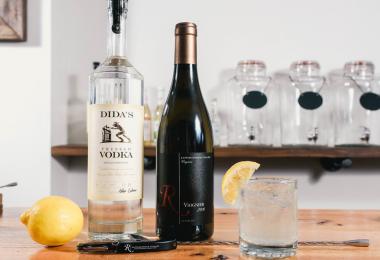Wine brands drawing on Māori designs and the Māori language pepper the New Zealand wine shelves and, to a customer pushing their trolley around the supermarket thousands of miles away, the labels are both aesthetically appealing and easily identifiable as New Zealand wines. However, brands such as Whakapapa Farm, Nika Tiki and Moko Black do not have genuine roots in New Zealand’s indigenous culture: they are often created and designed thousands of miles from New Zealand’s shores, shipped in bulk and bottled in Europe. It’s no wonder many Māori feel the use of their cultural heritage for commercial gain is offensive and with increasing recognition of indigenous rights around the world, it’s hoped that such cultural appropriation will no longer be acceptable.
In New Zealand itself, cultural appreciation rather than appropriation is gaining ground: there is renewed interest in indigenous culture, heritage and language: its native tongue, te reo Māori, became an official language in New Zealand in 1987 and is enjoying a renaissance. Although just four percent of New Zealand’s population are estimated to speak Māori, the country has set ambitious targets to increase it use while phrases including the greeting “kia ora” (hello) and “ngā mihi” (thanks) are in daily use by New Zealanders of all backgrounds.
Linguistic evolution
The process of reconciliation between Māori and New Zealanders of white European descent (Pākehā) has been a long and painful road so far. The issue has its roots in the Treaty of Waitangi, a document signed in 1840 between the British Crown and more than 500 Māori chiefs. With both Māori and English versions, interpretations differed, leading to many grievances and the creation of the Waitangi Tribunal in 1975, a permanent commission to inquire into breaches of the treaty and recommend settlements. “Part of this process became reparatory justice that is trying to correct the Crown’s past wrongs done to Māori but the process also linked to the idea of creating a partnership” between Maori and white settlers, explains Wayne Morrison, a New Zealand-born law professor at Queen Mary, University of London with a special interest in the jurisprudence of wine. “For many the revitalisation of Māori language and culture, the constitutional ideas of partnership, and the healing process involved with the activities of the Waitangi Tribunal resulted in a new existential sense of belonging, a development that sees New Zealand as New Zealand/Aotearoa, a dualism in partnership,” he adds in a paper to be published later this year.
This revitalisation of Māori culture is now having an impact on the language and behaviour of the country’s wine industry. In 2017, at the sixth Pinot Noir conference in the capital of Wellington, the concept of tūrangawaewae, was introduced to delegate from across the globe and it has since become increasingly common in the language of New Zealand winemakers and marketers. Tūrangawaewae, according to Te Ara, the Encyclopedia of New Zealand “is one of the most well-known and powerful Māori concepts. Literally tūranga (standing place), waewae (feet), it is often translated as ‘a place to stand’. Tūrangawaewae are places where we feel especially empowered and connected. They are our foundation, our place in the world, our home.” It might be a marae, the Māori gathering place, a mountain, a region. The 600 attendees at the 2017 Pinot Noir conference were introduced to the concept along with kaitiakitanga, which is a term now used on the national wine association’s website, described as “the Māori concept of guardianship and protecting the environment”. For many wine producers, this notion is compatible with the industry’s adoption of sustainable practices and a growing body of organic and biodynamic growers, but adopting terms from an indigenous culture to suit their own purposes must not be tokenistic.
While Māori have had little involvement in the wine industry thus far, they own significant agricultural assets, according to government figures, accounting for 50% of the country’s fishing quota, controlling 40% of forestry land, as well as 30% of lamb, sheep and beef production. “We are deeply involved in primary industries and our participation is coming to the fore, giving us greater visibility,” says Rachel Taulelei, CEO of Kono, a Māori-owned food and beverage producer, which farms apples, pears and kiwi fruit as well as seafood and, is responsible for the first-ever Māori wine brand, Tohu, launched 20 years ago. “We undertake business based on values and tikanga (our ways), which are quite different to Western models. It’s a more holistic approach to mahi (work) – for example, our team are more than employees; we care for our people and their families as if they were our own. We call this whanaungatanga,” explains Taulelei. Such values including the idea of guardianship of the land and the people who work on it are not difficult to appreciate but the native language requires cultural sensitivity. “The Māori words and concepts of tūrangawaewae and kaitiakitanga are incredibly deep and when they are translated, they do lose their nuance,” she says.
Since tūrangawaewae was introduced to the wine community, however, a number of non-Māori members of the industry and media have been heard using tūrangawaewae casually, a culturally cool marketing term that provides New Zealand wine with a unique selling point, which some have incorrectly equated to a local version of terroir. “I certainly do not want to denigrate this use of te reo Māori but their needs to be evidence of a genuine understanding to deflect suspicion of an act of cultural appropriation and demonstrate a genuine desire or commitment to reflective considerations,” says Morrison but Taulelei is more conciliatory: “This is presently a time of people learning and hopefully listening in order to learn how these concepts can be a part of their lives and in their excitement people don’t always get it right but instead of clobbering them there’s a period of time for respect and education.”
Nick Mills is embracing the opportunity to better understand these concepts as the fourth generation to live and work at Rippon Vineyard in Central Otago. His great-grandfather, of English descent, bought the farm on the shores of Lake Wanaka in 1912 and his father introduced vines to the lakeside slopes. Alongside Taulelei and Dame Anne Salmond, professor of Māori studies and anthropology at the University of Auckland, Mills introduced his sense of belonging to a place at the 2017 conference and, as a Pinot specialist, is now looking closer to home rather than to Burgundy for inspiration, which includes drawing on Māori concepts. “Our native people have this notion that reflects how we as New Zealanders – and as winegrowers – have started to feel. It’s a change of our cultural reference point as Pinot Noir growers,” explains Mills. The latest committee organising the next Pinot Noir conference in Christchurch in 2022, plans to explore the concept further and are working closely with the region’s Mãori tribe Ngāi Tahu in a bid to avoid cultural misunderstandings. “The sovereignty of those words belongs to Māori people. We don’t want to take ownership of those words; we want to understand what they mean and be better treaty partners.”
Difficult issues
While some members of the New Zealand wine industry are making a genuine effort to better understand these concepts, the adoption of the language and aesthetics by non-Māoris can be inappropriate, particularly in the form of faux-Māori brands created overseas. Lynell Tuffery Huria, a leading Maori lawyer for Wellington-based legal firm AJ Park, specialising in indigenous law and intellectual property, explains that there is little that can be done legally to prevent these brands. The World Intellectual Property Organization has failed to reach a consensus on protecting such cultural heritage and preventing appropriation and as a result, indigenous cultural icons have been left unprotected. “Internationally there’s not much that can be done legally unless a product is misleading to consumers: do the image and words create an assumption in the consumers’ minds about where it’s from? If so, it becomes a consumer affairs issues but to take legal action is costly and we don’t have the ability to pursue that,” she says.
Without recourse to law, education around the use of indigenous peoples’ cultural heritage can prevent misunderstanding through ignorance. Tuffery Huria explains that there is a cultural process that Māori undertake before using their own words for business names. “If I were to name a business, I would speak to my mother, father, aunty, grandparents – if they were alive – and elders from my marae; I would not assume I could just use a Māori word. We have to educate non-Māori that they can’t just use a word because it’s out there.”
Clearly, some brand owners need to better appreciate cultural sensitivities as this is hardly a passing storm. In New Zealand, there is clearly a well-intentioned section of the wine industry who wish to better appreciate and work in partnership with the Māori community. However, there is also a temptation to integrate language and concepts that seem to be compatible with agricultural businesses without fully appreciating their nuance. There have been – and will be – mistakes made but, in an industry dominated by white faces, celebrating diversity and improving cross-cultural understanding is part of an ongoing and sometimes uncomfortable process.








